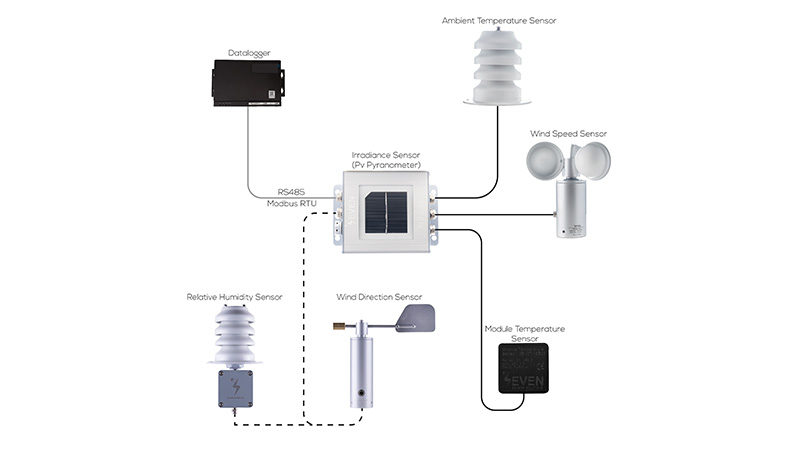A weather station is an essential investment for the contractor who spends a lot of time and effort designing and installing the photovoltaic plant and wants to keep track of weather parameters that affect the solar plant. Also, for the owners who spent their money to get the highest performance and effective plant.
What is a weather station or meteorological station?
A weather station is one or more sensors that are mounted on a mounting structure or directly fixed on the solar panels. The meteorological data is then stored in a data logger and can be transmitted to a remote server automatically. Weather Monitoring Stations help utility scale, as well as commercial solar power plants, capture the data related to weather conditions.
Seven Sensor Solutions took a major step forward to make their weather stations completely compatible with the well-known brands of dataloggers. Including Huawei, SMA, Sungrow, Fimer, Bluelog, Goodwe, SolarEdge, and others.
Which are the sensors that should be included in the weather station? Let us first understand the main seven sensors that determine the parameters that affect the performance of the cells.
1. The irradiance sensor: which can be used separately by connecting it directly to the datalogger via Modbus RTU, analog and digital outputs, is used for measuring the total radiation (the power of total solar radiation in watts per square meter). Solar radiation has a direct effect on the power of the panels. A decrease in solar radiation levels reduces the panel power.
2. Temperature sensors: we have a complete line of temperature sensors for use in long term performance monitoring of solar PV modules and systems. There is both a back-of-module temperature sensor and an ambient temperature sensor.
Both models are available in various signal output types to match our customers’ monitoring and data logging needs, which include: DS18B20 digital output, 4-20 mA, and RS485 Modbus outputs.
3. Wind speed sensor: An anemometer is a physical device used to measure wind speed. The wind generated by the airflow drives the top three wind cups to rotate, and the central axis drives the internal sensing element to generate an output signal, which includes Modbus RTU output, analog output, and digital output.
4. Wind direction sensor: is used to measure and transmit wind direction information. It works through the rotation of a wind vane arrow and transmits its measurement information to the coaxial encoder board, and at the same time outputs the relevant value via Modbus, analog, and digital outputs.
5. Relative humidity sensor consists of a solar radiation shield with a mounting bracket. It is used to measure the relative humidity in solar PV plants. Relative humidity could decrease the efficiency by 10–20% of the total power output produced. Seven relative humidity sensors are available in Modbus, analog, and digital outputs.
We mentioned our main sensors. However, we have other sensors such as the pyranometer for measuring the Global Horizontal Irradiance, the rain gauge, and other sensors.
There is no standard weather station solution for all customers. We rely on our customers’ requirements and specifications to recommend the most effective and economical weather station.
